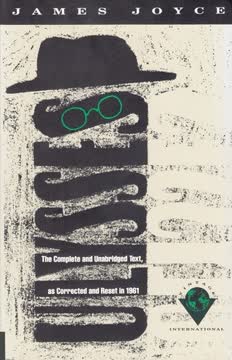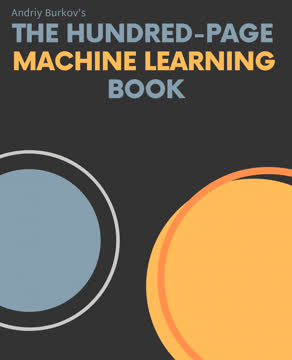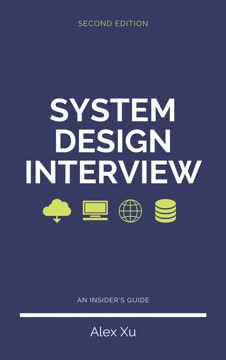重点摘要
1. C#基础:语法、变量和数据类型
“变量是我们在程序中需要存储和操作的数据的名称。”
基本构建块。 C#是一种强类型语言,这意味着每个变量必须有一个声明的数据类型。常见类型包括int(整数)、float和double(小数)、char(单个字符)、string(文本)和bool(真/假值)。变量使用以下语法声明:dataType variableName = value;
类型安全和转换。 C#强制执行类型安全,防止不兼容类型之间的意外操作。然而,当需要时,它允许显式类型转换(强制转换)。例如:
- int x = (int)20.9; // 结果:x = 20(小数部分被截断)
- float y = (float)10; // 将整数转换为浮点数
2. 面向对象编程:类、对象和继承
“继承允许我们从现有类创建新类,以便有效地重用现有代码。”
封装和抽象。 C#中的类将相关数据(字段)和行为(方法)捆绑成一个单元。这种封装有助于组织代码并隐藏不必要的实现细节。对象是类的实例,使用new关键字创建。
继承层次结构。 C#支持单继承,其中派生类(子类)继承基类(父类)的属性和方法。关键概念包括:
- 基类中的
virtual方法可以在派生类中被重写 protected成员在类及其派生类中可访问- 派生类的构造函数可以使用
base关键字调用基类构造函数
3. 控制结构:循环、条件和异常处理
“try-catch-finally语句控制程序在发生错误时的执行流程。”
决策。 C#提供了几种控制程序流程的结构:
- if-else语句用于条件执行
- switch语句用于多路分支
- 三元运算符(?:)用于内联条件
迭代。 循环允许代码块的重复执行:
- for循环用于已知次数的迭代
- while循环用于条件迭代
- do-while循环至少执行一次
- foreach循环用于遍历集合
错误管理。 C#中的异常处理使用try-catch块优雅地管理运行时错误,防止崩溃并提供有意义的反馈。
4. 高级数据类型:数组、列表和LINQ
“LINQ代表语言集成查询,是C#的一个有趣特性,允许你在程序中查询数据。”
集合。 C#提供了几种处理数据组的方法:
- 数组:固定大小的同类型元素集合
- 列表:动态大小的集合,具有内置的操作方法
- 字典:键值对集合,用于快速查找
LINQ的强大功能。 语言集成查询(LINQ)使内存数据的SQL样查询变得简单:
- 简化了数据的过滤、排序和转换
- 适用于各种数据源(数组、列表、XML、数据库)
- 使用声明性语法,通常比命令式代码更易读
5. 文件处理:读写外部文件
“C#为我们提供了许多处理文件的类。”
StreamReader和StreamWriter。 这些类便于从文本文件读取和写入:
- StreamReader:从字节流中读取字符
- StreamWriter:将字符写入流
文件管理。 File类提供了用于常见文件操作的静态方法:
- File.Exists():检查文件是否存在
- File.Create():创建新文件
- File.Delete():删除文件
最佳实践:
- 使用
using语句确保资源正确释放 - 处理潜在的异常(例如,FileNotFoundException)
- 对于大文件或网络资源,考虑异步操作
6. 方法和参数:定义和使用函数
“方法是执行某个任务的代码块。”
方法结构。 C#中的方法包括:
- 访问修饰符(例如,public,private)
- 返回类型(或void表示无返回)
- 名称
- 参数(可选)
- 方法体
参数传递。 C#支持不同的参数传递方式:
- 按值传递:传递参数的副本(值类型的默认方式)
- 按引用传递:传递参数的内存地址(使用ref或out关键字)
- Params关键字:允许可变数量的参数
方法重载。 C#允许具有相同名称但不同参数列表的多个方法,从而实现灵活的函数定义。
7. 多态性和接口:灵活的代码设计
“多态性指的是程序根据对象的运行时类型使用正确方法的能力。”
运行时类型确定。 多态性允许不同类型的对象被视为公共基类型的对象,并根据实际类型在运行时调用适当的方法。
接口。 接口定义了实现类必须遵守的方法和属性的契约:
- 允许行为的多重继承
- 促进组件之间的松耦合
- 便于单元测试和模拟
抽象类。 抽象类结合了接口和具体类的方面:
- 可以包含抽象(未实现)和具体方法
- 不能直接实例化
- 为相关类提供公共基类
8. 结构体和枚举:自定义值类型
“枚举(代表枚举类型)是一种特殊的数据类型,允许程序员为一组整数常量提供有意义的名称。”
结构体的优点。 结构体是可以包含方法和属性的值类型:
- 对于小型数据结构,比类更节省内存
- 自动实现值语义
- 不能参与继承
枚举的使用。 枚举提高了代码的可读性和类型安全性:
- 定义一组命名常量
- 可以在switch语句中使用,使代码更简洁
- 可以指定底层类型(默认是int)
9. 实际应用:构建一个简单的工资系统
“该应用程序由以下六个类组成:Staff,Manager : Staff,Admin : Staff,FileReader,PaySlip,Program”
对象模型设计。 工资系统展示了面向对象编程概念的实际应用:
- 以Staff为基类的继承层次结构
- 具有重写方法的专门类(Manager,Admin)
- 用于特定任务的实用类(FileReader,PaySlip)
概念的整合。 该项目结合了各种C#特性:
- 文件I/O用于读取员工数据
- LINQ用于数据操作
- 多态性用于工资计算
- 异常处理以确保稳健运行
现实世界的考虑。 该示例强调了重要的软件设计原则:
- 关注点分离(例如,文件读取与工资计算分离)
- 可扩展性(易于添加新员工类型)
- 通过模块化设计提高可维护性
最后更新日期:
FAQ
What's "Learn C# in One Day and Learn It Well" about?
- Beginner-friendly guide: The book is designed to help beginners learn C# programming quickly and effectively, with no prior coding experience required.
- Hands-on approach: It includes a hands-on project where readers build a simple payroll software, applying the concepts learned throughout the book.
- Comprehensive coverage: Topics range from basic syntax and data types to more advanced concepts like object-oriented programming and file handling.
- Practical examples: Each concept is demonstrated with carefully chosen examples to ensure a deeper understanding of C#.
Why should I read "Learn C# in One Day and Learn It Well"?
- Fast learning curve: The book is structured to help you start coding in C# immediately, making it ideal for those on a tight schedule.
- No prior experience needed: It assumes no prior background in coding, making it accessible to complete beginners.
- Project-based learning: The included project helps solidify your understanding by applying concepts in a real-world scenario.
- Broad exposure: It covers a wide range of topics without overwhelming the reader, providing a solid foundation in C#.
What are the key takeaways of "Learn C# in One Day and Learn It Well"?
- Understanding C# basics: Learn the basic structure of a C# program, including directives, namespaces, and the Main() method.
- Data types and variables: Gain knowledge about different data types, variable naming, and initialization in C#.
- Control flow and loops: Master control flow statements like if, switch, and loops such as for, foreach, while, and do-while.
- Object-oriented programming: Understand key OOP concepts like classes, inheritance, polymorphism, and interfaces.
What are the best quotes from "Learn C# in One Day and Learn It Well" and what do they mean?
- "The best way of learning about anything is by doing." - This quote emphasizes the book's hands-on approach, encouraging readers to actively engage with coding exercises.
- "Topics are carefully selected to give you a broad exposure to C#, while not overwhelming you with information overload." - It highlights the book's balanced approach to teaching, ensuring comprehensive yet manageable content.
- "Once you master C#, you will be familiar with these concepts. This will make it easier for you to master other object-oriented programming languages in future." - This quote underscores the transferable skills gained from learning C#, which can be applied to other programming languages.
How does "Learn C# in One Day and Learn It Well" approach teaching C#?
- Step-by-step guidance: The book provides clear, step-by-step instructions for each concept, making it easy to follow along.
- Practical examples: Each topic is illustrated with practical examples that demonstrate how to apply the concepts in real-world scenarios.
- Project-based learning: The book includes a project that ties together all the concepts learned, reinforcing understanding through practical application.
- Focus on fundamentals: It emphasizes understanding the fundamentals of C#, ensuring a strong foundation for further learning.
What is the hands-on project in "Learn C# in One Day and Learn It Well"?
- Payroll software: The project involves coding a simple payroll software from scratch, applying the concepts covered in the book.
- Real-world application: It provides a practical context for learning, helping readers see how C# can be used to solve real-world problems.
- Concept integration: The project integrates various topics such as object-oriented programming, file handling, and control flow.
- Source code availability: Readers can download the source code for the project, allowing them to compare their work and learn from the provided solution.
What are the basic concepts of C# covered in "Learn C# in One Day and Learn It Well"?
- Program structure: Learn about the basic structure of a C# program, including directives, namespaces, and the Main() method.
- Variables and data types: Understand how to declare, initialize, and use variables, as well as the different data types available in C#.
- Operators: Get familiar with basic operators like addition, subtraction, multiplication, division, and modulus, as well as assignment operators.
- Arrays and strings: Explore advanced data types like arrays and strings, including their properties and methods.
How does "Learn C# in One Day and Learn It Well" explain object-oriented programming?
- Class and object creation: Learn how to write your own classes and create objects from them, understanding the blueprint-object relationship.
- Fields and properties: Understand the role of fields and properties in encapsulating data within a class.
- Methods and constructors: Discover how to write methods and constructors, including overloading and the use of the static keyword.
- Inheritance and polymorphism: Explore how inheritance allows code reuse and how polymorphism enables method overriding in derived classes.
What advanced topics are covered in "Learn C# in One Day and Learn It Well"?
- Exception handling: Learn how to use try-catch-finally statements to handle errors and exceptions in your programs.
- File handling: Understand how to read from and write to external files using classes like StreamReader and StreamWriter.
- LINQ: Get introduced to Language-Integrated Query (LINQ) for querying data in your programs.
- Enums and structs: Explore user-defined data types like enums and structs, and understand their use cases.
How does "Learn C# in One Day and Learn It Well" address error handling?
- Try-catch-finally: The book explains how to use try-catch-finally statements to manage exceptions and ensure resources are released properly.
- Specific exceptions: Learn about handling specific exceptions like FileNotFoundException and FormatException for more precise error management.
- Error messages: Understand how to display meaningful error messages to users when exceptions occur.
- Preventing crashes: The book emphasizes the importance of error handling in preventing program crashes and ensuring smooth execution.
What is the significance of the Main() method in C# as explained in "Learn C# in One Day and Learn It Well"?
- Entry point: The Main() method is the entry point of all C# console applications, where program execution begins.
- Method signature: It can take an array of strings as input, allowing command-line arguments to be passed to the program.
- Code execution: The book explains how to write and execute code within the Main() method, including calling other methods and classes.
- Program structure: Understanding the Main() method is crucial for grasping the basic structure and flow of a C# program.
How does "Learn C# in One Day and Learn It Well" explain the use of control flow statements?
- If and switch statements: Learn how to use if and switch statements to make decisions and control the flow of your program.
- Loops: Understand the use of loops like for, foreach, while, and do-while for repeating tasks and iterating over collections.
- Jump statements: Explore jump statements like break and continue for altering the flow of loops and switch statements.
- Practical examples: The book provides practical examples to demonstrate how control flow statements are used in real-world scenarios.
评论
《一天学会C#并学得很好》普遍获得好评,读者称赞其对初学者的简明清晰解释。许多有经验的程序员在学习C#或刷新技能时也觉得这本书很有帮助。该书因其实用的方法受到赞赏,包括练习和一个最终项目。一些评论者指出,它可能不适合绝对的初学者或那些寻求深入覆盖的人。总体而言,读者欣赏其直截了当的风格和快速掌握C#基础的能力,尽管有些人建议补充其他资源以获得更全面的理解。

















